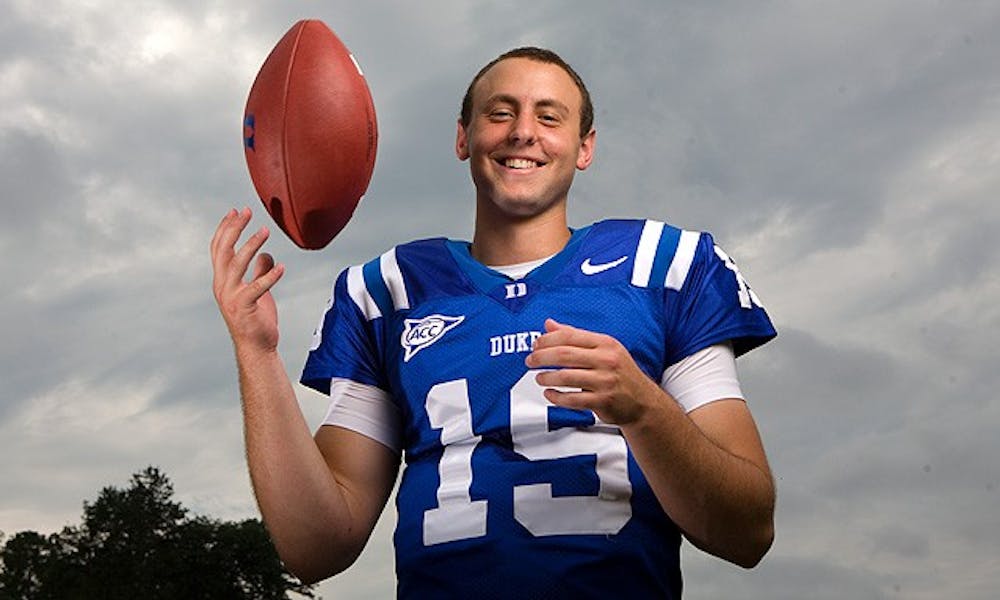It’s been long established that the South—from Texas to the east—is home to the best football in the country, from Pop Warner all the way through college. The pedigree of the Southeastern Conference speaks for itself: SEC teams have won the last four BCS National titles and produced two of the last three Heisman Trophy winners. The ACC, not to be completely outdone, has storied programs such as Virginia Tech and Miami, which both made appearances in BCS title games in the last decade.
But despite all of this hardware, I’d like to believe I grew up in the purest of college football havens: Southern California.
Contrary to popular belief, Los Angeles and the surrounding area turn out in huge numbers to see USC, albeit when the team is projected to win more than 10 games. Calling these people fair weather fans would be an understatement, but who cares—people in Southern California are fair weather about everything. Unlike any other major market, Los Angeles has no NFL franchise—though many still cling to the Raiders.
That gap is what forces thousands to pack into high school stadiums all over the valley, or, as is the case with most football-seeking fans, pile into the L.A. Coliseum for USC games.
But after high school, while many of my classmates loaded down their cars and headed down the road to become Trojans, I took the road less traveled—east to count down the days until Midnight Madness. Before I came, I hadn’t heard of the new football coach at Duke, the third of the decade, an offensive coordinator from Tennessee whose claim to fame was having both Manning brothers on speed dial. And while I was planning my trek to Durham, USC was fresh off a 32-point victory over Illinois in the Rose Bowl. The cultures couldn’t have been any more distinct. My friends were already buying tickets for the next Rose Bowl, while my new school had four wins in as many years.
Oh, how times have changed.
While USC faces numerous allegations of agent tampering and is not the national power that it used to be, Duke has a bright future in which a bowl berth is more than the joke it would have been when I was in high school. I didn’t see this coming. But maybe I should have.
Over the past three years, just a few hours north of the Coliseum, head coach Jim Harbaugh has taken Stanford from a one-win team that finished dead last in the Pac-10 and turned it into a legitimate conference title contender. The 2009 second-place conference finish for the Cardinal would have been viewed as a flash in the pan in the recent past, but Harbaugh and Co. seem to be just beginning to tap into their potential.
How did Harbaugh turn a sunken program around so quickly?
He built the program through extensive in-state scouting and finding underrated recruits.
With academic standards higher than any in the Football Bowl Subdivision, building a winner is made all the more difficult. But Stanford has begun to steal recruits from in-state powers—like USC, simply from expanding their recruiting network in California. The Cardinal’s senior class was ranked No. 51 on Rivals.com, but the freshman class today is ranked 26th. The Blue Devils have not made quite as much progress—their first-year class is ranked six slots higher than its counterpart in 2007.
Duke’s strategy is similar. Cutcliffe and his coaches have begun to make in-roads into North Carolina territory previously dominated by the Tar Heels and Wolfpack. Plus, Cutcliffe’s quarterback coaching pedigree led Duke to steal Sean Renfree, the first blue-chipper of the new coach’s era.
Duke may still be a few years behind Stanford, but, if the similar strategies are any indicator, it’s clear the Blue Devils are heading in the right direction.
Still, as a high schooler, I never expected Duke to be bowl competitive while USC watched from home. But then again, it won’t really matter because even if the Trojans decline, those fair weather fans won’t care anyway.
Get The Chronicle straight to your inbox
Signup for our weekly newsletter. Cancel at any time.

